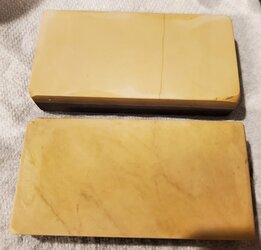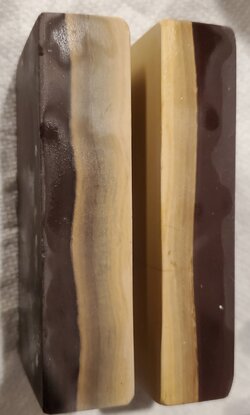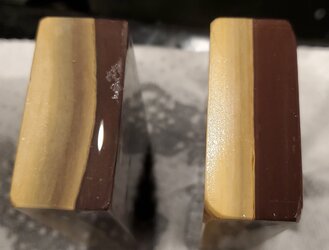The coticule pictured below is the hardest I've come across. It's flat, but the surface texture is very aggressive and I'd like to tame it a bit. This stone has the highest garnet content of the 4 coticules I own. I've ran it through wet/dry sandpaper from 400 to 1500 grit, and nothing seems to mellow it out.
I've got some loose 1700 SiC powder, but l can't do that kind of lapping indoors and I won't be able to get outdoors until the temp goes above 50F later this spring. I think I have two options - wait for spring or invest in some new diamond plates.
I'm open to ideas...



I've got some loose 1700 SiC powder, but l can't do that kind of lapping indoors and I won't be able to get outdoors until the temp goes above 50F later this spring. I think I have two options - wait for spring or invest in some new diamond plates.
I'm open to ideas...





